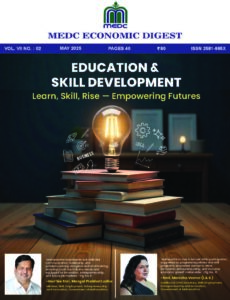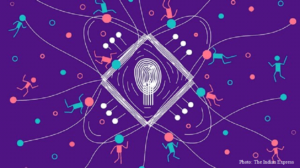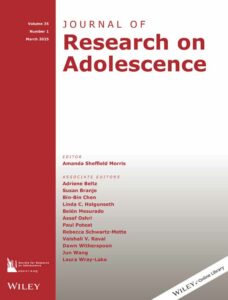
India has made remarkable strides in expanding access to education for girls over the past few decades. Enrolment rates for girls in primary and secondary schools have risen significantly, and gender gaps in literacy have narrowed. Girls have surpassed boys even in gross enrolment in higher education. However, this educational success has not translated into a proportional increase in female labour force participation.

As India seeks to enhance its innovation ecosystem, it is worthwhile to pay attention to opportunities and lessons from the self-inflicted wounds on American science.

Above all, trust in government is the key to successfully implementing difficult decisions during emergencies.
This March marks five years since the world stopped. On March 11, 2020, the World Health Organisation (WHO) declared Covid a pandemic. On March 24, the Government of India declared a nationwide lockdown, one of the most stringent globally. With five years and much water under the bridge, it is easy to forget the gasping breaths, millions of deaths, and shuttered businesses. That is, until the next disaster strikes. Can we learn from that painful experience to prepare for the next disaster, whether it is a black swan event like the pandemic, a tsunami, or a drought?

This paper explores ‘gatekeeping’, the phenomenon where access to a sample person in the household is controlled by another person. Gatekeeping of female persons is especially an issue in societies governed by gendered social norms. It can increase survey error by reducing response rates and potentially increasing non-response bias, and can increase measurement error when gatekeepers insist on providing proxy responses. We contribute to the sparse literature on gatekeeping by using data from a telephone survey of migrants in India and focusing on the sample of female married-out migrants. We estimate the prevalence of gatekeeping, compare outcomes of calls made to gatekept versus non-gatekept cases, and model the likelihood of a proxy interview. We estimate that gatekeeping of females in telephone surveys is in the range of 56%–65%, with gatekept calls much more likely to result in proxy interviews. We find that older and more-educated women are less subject to gatekeeping and that male and married interviewers are associated with a greater likelihood of gatekeeping. We discuss implications of these results for survey practice.

We investigated how adolescents’ time allocation across daily activities influences their body mass index and well-being by paying explicit attention to gender and activities relevant to low- and middle-income countries (LMICs). We hypothesized that the inequitable domestic burden shouldered by girls adversely affects their health and well-being. Using data from three waves of the Young Lives Longitudinal Survey (2009, 2013, and 2016) tracking 1891 children aged 8, 12, and 15 from predominantly rural, low-income households from South India, we analyzed gendered time use patterns and their implications. Girls spent more time on caregiving, housework, and studying at home, while boys allocated more time to school, leisure, and sleep. Random effects models revealed that time spent on caregiving and housework increased the likelihood of being overweight or obese among girls, whereas leisure time reduced it. Time in school was positively associated with girl’s thinness, as was time spent on sleep for both boys and girls. Gender moderated the effects of time spent on housework and unpaid economic tasks on thinness, reducing its likelihood for girls. Subjective well-being improved with time spent in school and studying for all adolescents. Fixed effects models revealed it worsened for girls engaged in paid work and boys engaged in leisure. Longer sleep hours improved boys’ well-being. These findings underscore that gendered time use patterns, particularly girls’ unequal burden of domestic responsibilities, contribute to their increased risk of overweight and obesity. Addressing these disparities is crucial for improving adolescents’ health and well-being in resource-poor settings in LMICs.










